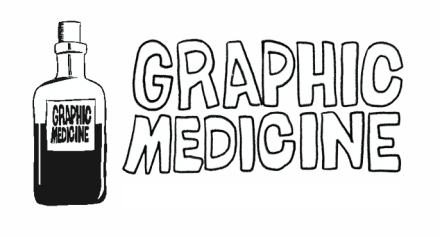
Graphic Medicine at LSL
Graphic Medicine is the use of comics and graphic novels to explore experiences of health, illness, caregiving, and the culture of medicine. Combining words and sequential images, these works make complex ideas approachable and human stories vivid. The format invites readers to slow down, attend to nuance, and inhabit perspectives they might not otherwise encounter. In recent years, clinicians, patients, educators, and researchers have embraced Graphic Medicine as a powerful medium for empathy-building, reflective practice, and health communication. In clinical education, for example, comics can illuminate social determinants of health, ethical tensions, or the emotional landscape of diagnosis in ways that complement traditional texts. For patients and families, they can demystify medical processes, destigmatize conditions, and provide language for experiences that are hard to put into words.
At our library, we curate a growing collection of Graphic Medicine materials to support education, research, and patient-centered care. The collection spans three broad groupings. First are patient and caregiver narratives—often called “graphic pathographies”—that depict lived experience with conditions such as cancer, neurodegenerative disease, mental health, chronic pain, disability, pregnancy and loss, or aging. These titles help readers grasp the day-to-day realities behind clinical labels: navigating appointments, managing side effects, negotiating identity, and finding meaning. Second are works from clinicians and trainees that reflect on professional formation, bias, burnout, teamwork, and the ethics of practice. These offer rich prompts for discussion in courses on professionalism, interprofessional education, and narrative medicine. Third are pedagogical and public health texts—anthologies and handbooks that introduce methods for making comics in the classroom or communicating health information with clarity and respect. Together, these strands create a versatile toolkit for teaching, learning, and conversation.
Our current holdings include single-author memoirs, short-form anthologies, and scholarly companions that situate the field historically and theoretically. You will find works that tackle topics across the lifespan; stories that foreground diverse voices across race, gender, sexuality, language, and disability; and volumes that model trauma-informed storytelling. Many items are suitable for course adoption or small-group facilitation, with discussion questions, suggested activities, or companion guides. Several texts also address health literacy directly, using visual design to explain procedures, medications, or care pathways in accessible ways—resources that can be valuable for community engagement or patient education.
The collection continues to evolve. We welcome recommendations. Graphic Medicine reminds us that healthcare is more than data and protocols; it is also narrative, relationship, and meaning. We invite you to explore, teach with, and contribute to this collection as we learn together from the stories on the page.
